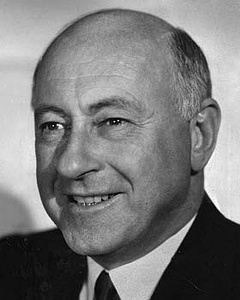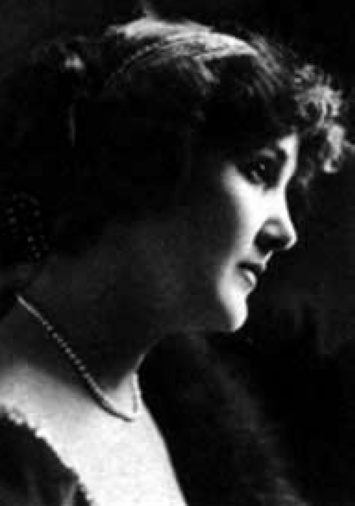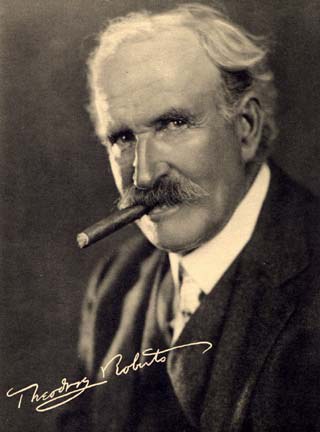The Girl of the Golden West(1915)

导演: Cecil B. DeMille
编剧: 大卫·贝拉斯科
主演: Mabel Van Buren Theodore Roberts House Peters Anita King Sydney Deane William Elmer Jeanie Macpherson Raymond Hatton Richard L'Estrange Tex Driscoll Artie Ortego John Oretgo James Griswold Edwin Harley
制片国家/地区: 美国
上映日期: 1915
片长: USA: 50 分钟 IMDb: tt0005393 豆瓣评分:0 下载地址:迅雷下载
演员:
影评:
1914是CB相当繁忙的一年,拍出好莱坞第一步电影《红妻白夫》并一连拍摄了六部影片,为Lasky公司监制了21部影片(在1915年拍摄了14部,监制了36部)。在这一年他也遇到 Jeanie Macpherson, Buckland, Alvin Wyckoff等对他影响深远的人。这一年也是CB开始学习电影技巧的一年,从乏味的中景发展出为戏剧效果对光影的偏好。
(1)DeMille and company didn’t start shooting The Virginian, their second picture, until April, two months after The Squaw Man was released and it was increasingly obvious that it would be a big hit. As the money rolled in, production ramped up. The Virginian was, of course, an adaptation of Owen Wister’s famous novel, and was made for $17,022, bringing back slightly more than $110,000 in receipts.
The Virginian was the first movie for which DeMille took sole credit (“Picturized by Cecil B. DeMille”), and it once again focuses on the beefy charms of Dustin Farnum. At the same time, it’s a far more fluid film than The Squaw Man. There are very tight close-ups, an almost total reliance on locations, and some very creative use of the camera. One scene is lit only by a campfire, and at one point DeMille mounts the camera on the back of a stagecoach to get a dynamic shot looking down on the driver and the leading lady as they ride through a canyon. When the Virginian’s friend Steve is hanged for rustling cattle, DeMille shows the swinging body in shadow form.
There is an overriding sense that DeMille is presenting not theater, but figures in a landscape. Already present is a strong sense of how to effectively dramatize commercial material. The Virginian features some of the low-key lighting that is nowhere to be found in Oscar Apfel’s work and would become one of DeMille’s signatures—a prominent stylistic device that undoubtedly owed a great deal to his new cameraman. Al Gandolfi, who had shot The Squaw Man, stayed with Apfel as he made other pictures for Lasky, so Cecil hired a thirty-six-year-old named Alvin Wyckoff. Wyckoff and DeMille would form a seamless team for nearly ten years.
(2)Jeanie Macpherson was born in Boston in 1887. She had a journeyman’s show business career that included chorus work at the Chicago Opera House, and small parts for Sir Johnston Forbes-Robertson. She had also been in the touring company of Bill deMille’s play Strong heart.By 1908, she was working in the movies at both Edison and Biograph. At the former, she had been directed by Oscar Apfel; at the latter, she had appeared in a long list of Griffith’s best, most innovative Biograph films: The Curtain Pole, A Corner in Wheat, The Message of the Violin, The Lonedale Operator, Enoch Arden. She had also written and produced movies at Universal and Balboa. Some thought that love letters she had written Griffith helped break up his marriage.
“After Constance, Jeanie was the great love in his life,” said DeMille’s granddaughter Cecilia. “He talked about her a lot. She shared with him that most important time; when you are young and you’re going up. He would talk about the thrills he and Jeanie had had in what they were doing together—the films, the pioneering in a new industry, watching the major successes of their collaboration. He once told me that there were three women aside from my grandmother—who was always in a separate category—who could have had anything they wanted from him: my mother, Gladys Rosson, and Jeanie.”
(3)
All this came about because of a shift in his marriage to Constance. In 1914, at the age of forty-one, Constance suffered a miscarriage, and that, coming after the difficult birth of Cecilia, impelled her to remove herself from the marriage bed. The ardent letter that Cecil wrote her during his trip to California to make The Squaw Man carries some indication that sex may not have been her cup of tea in the first place. In 1914, Cecil was only thirty-three, and not of a celibate disposition. There is no indication that he had ever had an extramarital affair until now—both Jesse Lasky and William deMille believed him to have been an absolutely loyal husband, and they would have known—but he began one with Macpherson.
Outside of the bedroom, nothing changed. Cecil regarded Constance with something approaching adoration. As for Jeanie Macpherson, Cecil respected her tenacity, both professionally and personally. “She was like a tarantula,” he would remember admiringly years later. “When she got her fangs into anything you couldn’t shake her loose.”
(4)Buckland would build spectacular sets then and afterward (Douglas Fairbanks’s Robin Hood was Buckland’s greatest post-Lasky achievement) but all that pales next to his bringing the Belasco technique of designing with light to the movies, where it could be more heightened than in the theater. At that time, as DeMille remembered, cameramen were rated according to “how clearly you could see under the table . . . how clearly you could see the back corner of the room—both corners.” DeMille had something else in mind, and he knew that Buckland could help him realize it.
“Buckland is a man who has not been given credit that he deserves,” DeMille stated near the end of his life. “Belasco’s productions were something nobody in the world could equal, and that was because of Buckland.”
(5)“The Call of the North is the latest and beyond question the best of the Lasky photoplays produced under the direction of Cecil B. DeMille and Oscar C. Apfel,” wrote the New York Dramatic Mirror, while the Moving Picture World said, “The dominant characteristic of the play is lavishness. A lofty ambition to attain the highest ideals in the motion picture art gave birth to this feature, which I am tempted to describe as one of the greatest classics ever produced on American soil.”
(6)
Cecil was still learning his craft in this period—he relies too much on medium shots—but every film he makes has some compelling, exploitable, or dramatic element: a famous source play, attractive stars, or innovative handling, sometimes all three.
By the middle of 1914, the Lasky company had joined a releasing combine called Paramount, organized by a man named W. W. Hodkinson. Paramount was a distribution mechanism releasing pictures from a group that included Famous Players, Bosworth, and Lasky. Famous Players was run by a bright, highly acquisitive man named Adolph Zukor. Zukor liked the pictures the Lasky company was making; he also liked the name Paramount.
(7)When not directing, writing scenarios, supervising the other directors, juggling his debts, and running the lab—in spare moments he probably grabbed a broom and swept the studio—DeMille kept an eye on what other producers were doing and occasionally offered some boyishly enthusiastic wild schemes
(8)Gladys Rosson was a prim little woman who wore steel-framed glasses, dressed like a provincial schoolteacher, and looked like the popular conception of a spinster. But Gladys was a ferociously organized, determined, and—above all—focused woman whose focus was always resolutely on Cecil B. DeMille. She worked for him all her life, and was one of the few admitted to the trusted inner circle of his business and family. Gladys’s brothers Arthur and Hal followed her lead and became notable members of the movie community, the former as a director, the latter as a cameraman of genius.
(9)Eight days after finishing Rose of the Rancho, Cecil was shooting another Belasco play, The Girl of the Golden West, converted into an opera by Giacomo Puccini in 1910. Cecil shot his film in precisely eight days, which perhaps explains why the opera is better. Cecil didn’t take much time for niceties, although there are several moments when the camera tracks in from a long shot to a medium shot. The story is a Bret Harte–ish tale of early California, the leading lady (Mabel Van Buren) is homely, but Jeanie Macpherson, who acted in the film, is noticeably charming. Cecil spent $15,109 making the film, which earned $102,224.
Cecil began The Warrens on December 5, finished it on January 9, 1915, and it was released on February 15. Cecil remembered that it was on that picture that he devised what he referred to, with some exaggeration, as “the birth of artificial [screen] lighting.”
“When we first went to California, everything was sunlight. No artificial light was employed. Having come from the stage, I wanted an effect, so I borrowed a spotlight from an old theater in Los Angeles [DeMille later remembered it was the Mason Opera House] when I was taking a photograph of a spy. The spy was coming through a curtain and I lighted half of his face [with] only just a smash of light from one side, the other side being dark. I saw the effect on the screen and carried out that idea of lighting all through the rest of the picture, that is, a smash of light from one side or the other.”
When DeMille sent the finished picture east, Sam Goldfish sent a violent telegram: “Have you gone mad? Do you expect us to be able to sell a picture for full price when you show only half of the man?”
“This isn’t an exaggeration,” DeMille would insist when telling the story in later years. “This is exactly as it occurred. . . . I was really desperate. As I told you, the director has to go through; he has to do something. So Allah was very kind to me and suggested the phrase ‘Rembrandt lighting.’ I sent a telegram to New York saying ‘If you fellows are so dumb that you don’t know Rembrandt lighting when you see it, don’t blame me.’ The sales department said, ‘Rembrandt lighting! What a sales argument!’ They took the picture out and charged the exhibitor twice as much for it because it had Rembrandt lighting.”
(10)As with his mentor, DeMille would use lighting not only to create striking images, but to heighten already dramatic situations. DeMille would rarely be interested in dynamic camera movement per se, was considerably more expert in abrupt, volatile editing, but his concern with composition and lighting made him a true innovator in moviemaking of this period, where the primary concern was in recording a clean, unambiguous image.
(11)
In May, the Jesse L. Lasky Feature Play Company joined the Hobart Bosworth Company and Adolph Zukor’s Famous Players Company to sign with a producing-and-distributing combine. The Paramount Pictures Corporation was managed by a distributor named William Wadsworth Hodkinson. “On his way to establish his new company,” wrote DeMille, “W. W. Hodkinson passed a building called the Paramount apartments. That struck him as a good name.
During the conference, remembering the Wasatch Range of Utah, where he made his start, Hodkinson drew on a desk blotter a picture of a snow-capped mountain. Paramount had a trademark.” Paramount would finance and distribute 104 films in a year. The Lasky Company would supply thirty of those, and, beginning in August, would receive $17,500 from Paramount for each film.
(12)
Lasky had to be pleased with DeMille in 1914. The director-general made seven films of his own and supervised a total of twenty-one. In 1915, he made fourteen and supervised thirty six. The films featured well-known players such as Blanche Sweet and Thomas Meighan, and attractive titles such as The Warrens of Virginia, but nothing could really explain why a film costing $28,000 could gross $86,000. The modest Wild Goose Chase cost $10,000 and grossed $60,000, perhaps because Ina Claire was a Broadway star
(13)
Nineteen fourteen and fifteen were years of learning for Grandfather. He was learning what could be done on film that could not be done on stage. There was so much to learn, and then he had to teach what he’d just learned. Actors could no longer stride across the room. They had to simply walk across the room. In this new medium they had to look natural. As he got the camera gradually closer, he filmed nuances that an audience in the second balcony of a stage play could never have seen.



